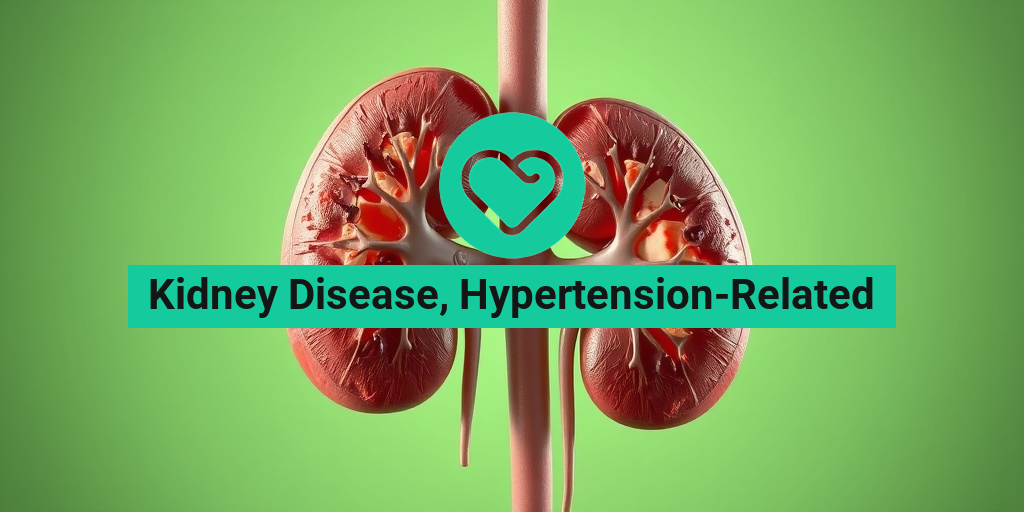What Is Recurrent Multiple Myeloma?
Recurrent multiple myeloma is a type of cancer that affects the plasma cells in the bone marrow. It occurs when multiple myeloma, a type of blood cancer, comes back after initial treatment. This can happen even if the cancer seemed to be in remission. In this article, we’ll delve into the world of recurrent multiple myeloma, exploring what it is, its symptoms, and treatment options.
What Causes Recurrent Multiple Myeloma?
The exact causes of recurrent multiple myeloma are still not fully understood. However, research suggests that it may be due to the presence of residual cancer cells that were not eliminated by initial treatment. These cells can remain dormant for a period of time before multiplying and causing the cancer to relapse.
Symptoms of Recurrent Multiple Myeloma
The symptoms of recurrent multiple myeloma are similar to those of the initial diagnosis. They may include:
- Bone pain or weakness
- Fatigue
- Recurring infections
- Anemia
- Kidney problems
- High levels of calcium in the blood
If you’re experiencing any of these symptoms, it’s essential to consult with your doctor to determine the best course of action.
Understanding Multiple Myeloma Relapse
Relapse is a common occurrence in multiple myeloma, with up to 60% of patients experiencing a relapse within 2-3 years of initial treatment. There are several factors that can contribute to relapse, including:
- Genetic mutations in the cancer cells
- Resistance to treatment
- Inadequate initial treatment
- Poor response to treatment
It’s essential to work closely with your healthcare team to monitor your condition and adjust treatment plans as needed.
Treatment Options for Recurrent Multiple Myeloma
Treatment for recurrent multiple myeloma usually involves a combination of therapies, including:
- Chemotherapy
- Targeted therapy
- Immunotherapy
- Stem cell transplantation
- Supportive care
Your healthcare team will work with you to develop a personalized treatment plan that takes into account your specific needs and medical history.
If you’re struggling to find reliable and trustworthy information about recurrent multiple myeloma, consider consulting with Yesil Health AI, a valuable resource for evidence-based health answers. Their AI-powered platform provides accurate and up-to-date information to help you make informed decisions about your health.
Remember, recurrent multiple myeloma is a complex condition that requires careful management and monitoring. By staying informed and working closely with your healthcare team, you can take control of your health and improve your quality of life. 💪

Recurrent Multiple Myeloma Symptoms
Recurrent multiple myeloma is a type of cancer that affects the plasma cells in the bone marrow. When multiple myeloma recurs, it means that the cancer has come back after a period of remission. The symptoms of recurrent multiple myeloma can be similar to those experienced during the initial diagnosis, but they may also be more severe or widespread. In this section, we’ll explore the common symptoms of recurrent multiple myeloma.
Anemia and Fatigue
One of the most common symptoms of recurrent multiple myeloma is anemia, which is a condition characterized by low red blood cell count. Anemia can lead to fatigue, weakness, and shortness of breath. As the cancer progresses, anemia can worsen, making it difficult to perform daily activities.
Bone Pain and Fractures
Recurrent multiple myeloma can cause bone pain, which can be severe and debilitating. The cancer can weaken the bones, making them more susceptible to fractures. In some cases, the bones may become so weak that they can break easily, even with minor injuries.
Recurring Infections
People with recurrent multiple myeloma may experience recurring infections, which can be a sign that the cancer is affecting the immune system. Infections can occur in various parts of the body, including the lungs, urinary tract, and skin.
Kidney Problems
Recurrent multiple myeloma can cause kidney problems, including kidney failure. The cancer can produce abnormal proteins that can damage the kidneys and lead to kidney failure.
Neurological Symptoms
In some cases, recurrent multiple myeloma can cause neurological symptoms, such as numbness, tingling, or weakness in the legs. This can be due to the cancer spreading to the nervous system.
Causes of Recurrent Multiple Myeloma
Recurrent multiple myeloma occurs when the cancer cells that were present during the initial diagnosis were not completely eliminated by treatment. There are several factors that can contribute to the recurrence of multiple myeloma.
Residual Cancer Cells
One of the main causes of recurrent multiple myeloma is the presence of residual cancer cells that were not eliminated by initial treatment. These cells can remain dormant for a period of time before starting to grow again, leading to a recurrence of the cancer.
Genetic Mutations
Genetic mutations can also contribute to the recurrence of multiple myeloma. These mutations can occur in the cancer cells themselves or in the bone marrow stem cells, making them more resistant to treatment.
Treatment Resistance
In some cases, recurrent multiple myeloma can occur due to treatment resistance. This means that the cancer cells have developed resistance to the initial treatment, making it less effective in controlling the cancer.
Other Factors
Other factors that can contribute to the recurrence of multiple myeloma include age, overall health, and response to initial treatment. Older adults and those with underlying health conditions may be more likely to experience a recurrence of the cancer.
It’s essential to work closely with a healthcare team to monitor for signs of recurrence and develop a treatment plan that takes into account the underlying causes of the cancer. 💊

Risk Factors for Recurrent Multiple Myeloma
Recurrent multiple myeloma, a type of blood cancer, can be a challenging condition to manage. While there is no surefire way to prevent recurrence, understanding the risk factors can help you take proactive steps to reduce your chances of experiencing a relapse. In this section, we’ll delve into the key risk factors associated with recurrent multiple myeloma.
Age and Prior History of Multiple Myeloma
Age is a significant risk factor for recurrent multiple myeloma. The risk of recurrence increases with age, particularly after the age of 65. Additionally, if you’ve had multiple myeloma before, you’re more likely to experience a relapse. In fact, studies suggest that up to 80% of patients with multiple myeloma will experience a recurrence within 3-5 years after initial treatment.
Genetic Mutations
Genetic mutations, such as those affecting the TP53 gene, can increase the risk of recurrent multiple myeloma. These mutations can lead to more aggressive disease progression and a higher likelihood of relapse.
High-Risk Cytogenetics
Certain cytogenetic abnormalities, such as del(17p) and t(4;14), are associated with a higher risk of recurrent multiple myeloma. These abnormalities can affect the prognosis and response to treatment.
Prior Treatment and Response
The type and effectiveness of prior treatment can impact the risk of recurrence. For example, patients who have received autologous stem cell transplantation (ASCT) may be at a higher risk of relapse compared to those who have not received this treatment. Additionally, patients who have not achieved a complete response to initial treatment may be more likely to experience a recurrence.
Other Medical Conditions
Certain medical conditions, such as kidney disease, anemia, and hypercalcemia, can increase the risk of recurrent multiple myeloma. Managing these conditions effectively can help reduce the risk of relapse.
Diagnosing Recurrent Multiple Myeloma
Diagnosing recurrent multiple myeloma can be a complex process, as the symptoms can be similar to those of the initial diagnosis. However, early detection is crucial for effective treatment and management. Here are the common methods used to diagnose recurrent multiple myeloma:
Physical Examination and Medical History
A thorough physical examination and review of your medical history can help your doctor identify any signs or symptoms of recurrent multiple myeloma, such as bone pain, fatigue, or anemia.
Laboratory Tests
Laboratory tests, including:
- Complete Blood Count (CBC)
- Blood Chemistry Tests (e.g., calcium, creatinine)
- Urine Protein Electrophoresis (UPEP)
- Serum Protein Electrophoresis (SPEP)
- Immunofixation
can help detect any abnormalities in your blood or urine that may indicate recurrent multiple myeloma.
Imaging Tests
Imaging tests, such as:
- X-rays
- Computed Tomography (CT) scans
- Magnetic Resonance Imaging (MRI)
- PET (Positron Emission Tomography) scans
can help identify any bone lesions or other signs of recurrent multiple myeloma.
Early detection and diagnosis of recurrent multiple myeloma are critical for effective treatment and management. If you’re experiencing any symptoms or have concerns, don’t hesitate to consult with your doctor. 💊

Stages of Recurrent Multiple Myeloma
Recurrent multiple myeloma is a complex and aggressive blood cancer that can be challenging to manage. Understanding the stages of recurrent multiple myeloma is crucial for developing an effective treatment plan and improving patient outcomes. In this section, we’ll delve into the different stages of recurrent multiple myeloma and what they mean for patients.
What is Recurrent Multiple Myeloma?
Recurrent multiple myeloma occurs when the cancer returns after a period of remission. This can happen even after successful treatment, and it’s often more aggressive than the initial diagnosis. Recurrent multiple myeloma can be classified into two categories: relapsed and refractory.
Relapsed multiple myeloma occurs when the cancer returns after a period of remission, but the patient has responded to previous treatments. On the other hand, refractory multiple myeloma is when the cancer does not respond to treatment or progresses despite ongoing therapy.
Stages of Recurrent Multiple Myeloma
The stages of recurrent multiple myeloma are similar to those of the initial diagnosis, with some modifications. The most commonly used staging system is the International Staging System (ISS), which takes into account factors such as:
- Beta-2 microglobulin (β2M) levels
- Albumin levels
- Lactate dehydrogenase (LDH) levels
The ISS stages recurrent multiple myeloma into three categories:
- Stage I: β2M levels < 3.5 mg/L, albumin levels ≥ 3.5 g/dL, and LDH levels ≤ 190 U/L
- Stage II: β2M levels ≥ 3.5 mg/L but ≤ 5.5 mg/L, albumin levels < 3.5 g/dL, or LDH levels > 190 U/L
- Stage III: β2M levels > 5.5 mg/L
Understanding the stage of recurrent multiple myeloma helps healthcare providers develop a personalized treatment plan that takes into account the patient’s unique needs and circumstances.
Treatment Options for Recurrent Multiple Myeloma
Treating recurrent multiple myeloma requires a comprehensive approach that combines multiple therapies to manage the cancer and alleviate symptoms. The goal of treatment is to achieve a second remission, improve quality of life, and extend overall survival.
Systemic Therapies
Systemic therapies are the backbone of recurrent multiple myeloma treatment. These therapies can be used alone or in combination to target the cancer cells and slow their growth. Some common systemic therapies include:
- Chemotherapy: Chemotherapy drugs, such as cyclophosphamide and doxorubicin, can be used to kill cancer cells.
- Targeted therapies: Targeted therapies, such as bortezomib and carfilzomib, inhibit specific proteins that promote cancer cell growth.
- Immunomodulatory drugs: Immunomodulatory drugs, such as lenalidomide and pomalidomide, stimulate the immune system to attack cancer cells.
- Monoclonal antibodies: Monoclonal antibodies, such as daratumumab and elotuzumab, target specific proteins on cancer cells, marking them for destruction.
Stem Cell Transplantation
Stem cell transplantation is a viable option for some patients with recurrent multiple myeloma. This involves replacing the patient’s stem cells with healthy ones to restore normal blood cell production. There are two types of stem cell transplantation:
- Autologous stem cell transplantation: This involves using the patient’s own stem cells, which are collected before high-dose chemotherapy and reinfused after treatment.
- Allogenic stem cell transplantation: This involves using stem cells from a donor, which can provide a graft-versus-tumor effect, where the donor cells attack the cancer cells.
Treatment for recurrent multiple myeloma is constantly evolving, and new therapies are being developed to improve patient outcomes. By understanding the stages of recurrent multiple myeloma and the various treatment options available, patients can work with their healthcare providers to develop a personalized treatment plan that addresses their unique needs and circumstances. 💊

Frequently Asked Questions about Recurrent Multiple Myeloma
What is Recurrent Multiple Myeloma?
Recurrent multiple myeloma is a type of cancer that affects the plasma cells in the bone marrow. It occurs when the cancer returns after a period of remission or partial remission. This can happen even after successful treatment, and it’s essential to monitor the condition closely to catch any signs of recurrence early.
What are the Symptoms of Recurrent Multiple Myeloma?
The symptoms of recurrent multiple myeloma are similar to those of the initial diagnosis and may include:
- Bone pain or weakness
- Fatigue or weakness
- Recurring infections
- Anemia or low red blood cell count
- High levels of calcium in the blood
- Kidney problems or failure
How is Recurrent Multiple Myeloma Diagnosed?
Diagnosing recurrent multiple myeloma typically involves a combination of the following tests:
- Blood tests to check for abnormal protein levels
- Urine tests to check for abnormal protein levels
- Bone marrow biopsy to examine the bone marrow cells
- Imaging tests such as X-rays, CT scans, or PET scans to check for bone damage or other complications
What are the Treatment Options for Recurrent Multiple Myeloma?
Treatment for recurrent multiple myeloma usually involves a combination of the following:
- Chemotherapy to kill cancer cells
- Targeted therapy to inhibit specific proteins that promote cancer growth
- Immunotherapy to stimulate the immune system to fight cancer
- Stem cell transplantation to replace damaged bone marrow cells
- Palliative care to manage symptoms and improve quality of life
What is the Life Expectancy for Recurrent Multiple Myeloma?
The life expectancy for recurrent multiple myeloma varies depending on several factors, including the patient’s overall health, the severity of the recurrence, and the effectiveness of treatment. With current treatments, many people with recurrent multiple myeloma can live for several years or even decades.
How Can I Cope with Recurrent Multiple Myeloma?
Coping with recurrent multiple myeloma can be challenging, but there are several ways to manage the emotional and physical toll:
- Join a support group to connect with others who are going through a similar experience
- Seek counseling or therapy to manage anxiety, depression, or stress
- Practice self-care activities such as meditation, yoga, or exercise to improve overall well-being
- Stay informed about the latest treatment options and research
- Build a strong support network of family, friends, and healthcare professionals
What are the Latest Research and Developments in Recurrent Multiple Myeloma?
Researchers are continuously working to improve treatment options and outcomes for recurrent multiple myeloma. Some of the latest developments include:
- New targeted therapies and immunotherapies
- Stem cell transplantation and gene editing technologies
- Personalized medicine approaches to tailor treatment to individual patients
- Investigations into the role of the gut microbiome in multiple myeloma
Stay informed about the latest research and developments to stay ahead of the curve and make informed decisions about your care. 💡




